Two Stroke Aircraft Engine Tuning Tips
In recent years the Homebuilt Rotorcraft industry has been exposed to a tremendous variety of engines, both off-the-shelf and out of the salvage yard – but little is known about engine tuning.
I’m sure you have your own pet powerplant ready to be installed in your dream machine. Possibly, changes in carburetion, exhaust system, or other modifications were necessary to make it fit. Could be you just can’t stand a stock engine!
What I want to give you is a reliable system of engine tuning & combustion chamber monitoring and power output. If this conjures up visions of computers, oscilloscopes or Dr. Frankenstein’s laboratory, I want to say, “Not a chance!”
Long before we had modern electronics, old time mechanics could tell you exactly the condition of your engine by looking at your spark plugs. This is known as taking a spark plug reading or checking plug color.
Your engine will burn three types of air/fuel mixtures: (1) LEAN , meaning less fuel compared to air; (2) PERFECT, the proper balance of air/fuel; and, (3) RICH, more fuel compared to air. Each one of these conditions causes certain effects in your engine and changes the color of the ceramic insulator surrounding the center electrode of a spark plug.

Right now, head down to your local motorcycle, snowmobile, or auto parts store and buy a full color plug chart. A quality chart lists 15 or 20 plug conditions with a brief explanation of each one. I’ll try and give some colors and a general run down on what they mean.
Lean conditions are generally borderline dangerous to your engine and will show up as a dull white to dull gray color on the insulator. This will cause your engine to run hot and will, in extreme conditions, burn valves and melt holes in your pistons.
A perfect air/fuel mixture will color the insulator a light tan to light brown and will help your engine run at the correct temperature . This is a real power setting for reliability and performance.
A rich condition will color the spark plug insulator a dark brown to a dull, soot black. This condition will cause power loss and misfiring. but probably won’t damage your powerplant. It is hard to translate words into colors and this is why I recommend a good chart to refer to.
Now that you have an idea of what colors to look for it is time to get out to your engine. First, is your engine timed correctly, both at idle and full advance? Are the plugs new and properly gapped? Is compression at the proper psi in all cylinders and fairly equal? How about valve adjustment?
I ask all of these questions because basic specifications have to be correct before we can move into the next step – jetting. This term simply means that you are changing the precision fuel orifices in your carburetor(s) to either a smaller or larger size. Since my experience is mainly with Mikuni round slide, float bowl carbs, I’ll probably use Mikuni part names.
The order of Rpm and throttle openings and what you should check first is the same for most carbs that I am familiar with. This is one place where we get to start at the top. The first step in engine tuning & carb work is to make sure our float level(s) are correct. This ensures that the main jet has enough fuel for the full throttle, high RPM range.
The main jet controls the fuel available to all circuits except the pilot circuit which on a Mikuni is separate. Since the main jet affects the needle, needle jet, and throttle slide cutaway it must be corrected first. What we want for this test is to duplicate actual running conditions as closely as possible.
Being new to aviation, I would assume you could safely and securely tie down your machine and do a propeller or rotor run-up. Mikuni states that the main jet has an effect from 3/4 to full open of the throttle slide.
You should have a good quality tachometer for RPM readings and a rough idea of the throttle openings. Now, with your throttle at the right engine setting to draw on the main jet, hit the kill switch and hold the throttle until the engine stops.
Wait a few minutes and then start pulling plugs and comparing colors to your chart. Usually, main jets are numbered with legible stampings on the side or slotted tops. The larger the number the more fuel the jet will flow.

You might have to do a number of tests to get it right. The next step down in the engine tuning process is the needle and needle jet. Once your main jet is giving the plugs a good color at 3/4 to full RPM you need to begin taking spark plug readings at 1/4 to 3/4 throttle openings.
The procedure is the same as the main jet but it’s a lot quicker changing the clip up or down the needle to vary the fuel ratio. After you have done your engine run, if you have a lean condition raise the needle by lowering the clip. If it’s rich just do the opposite.
I would recommend that you buy a manual on your particular brand of carburetor. Sudeo Mikuni offers a general purpose book explaining the styles, functions, and parts available for Mikuni carbs. Should you need a different needle or needle jet to clean up your fuel mixture you can’t do without a manual.
The parts are extremely precise and carry code numbers that indicate taper, steps, diameter, and other variables that affect the needle. Here is an example: 7F06, 6DH2, 5EJ11, 5DH21. The needle jet also carries code numbers that indicate what the part will do to affect air/fuel ratios: 145-N6, 239-06, 169-N8, 224 AA-5. The manual gives a thorough explanation and a chart to help you choose these complex numbers correctly.
Next step in engine tuning is the throttle slide cutaway and a throttle position of just above idle to 1/4 open. The slide has comparatively simple numbers like 1,0, 1.5, 2.0, etc. that indicate a small (1.0) to a larger (2.0). Your plug test will tell you which way to go but so far you have been dealing with fuel.
The cutaway controls air and the larger the slide number the leaner the air/fuel mixture. My experience has been that the needle, needle jet, and throttle slide won’t need to be replaced. Your own data that you have collected will be more reliable than my opinion so tune accordingly. It is reassuring to know that these parts are available from Mikuni if you do need them.
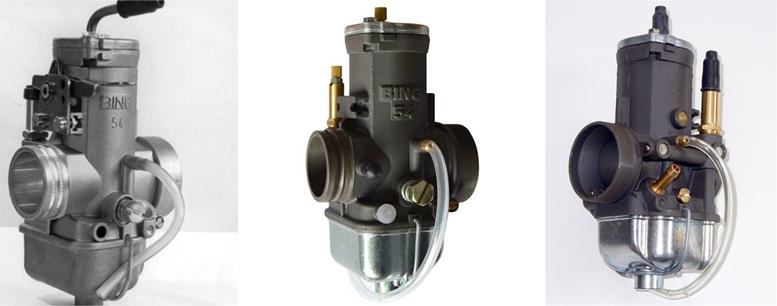
This brings me to some recommendations for choosing carbs or any parts for that matter. The first question should be, “Will it work?” Pretty obvious, huh? Maybe, but I want to open your mind to the possibilities and problems that you might encounter. You might run across some ultimate system, on the shelf, that is an absolute hideous nightmare when you apply it to your rotorcraft.
Another good question to ask is, “Can I get parts so I can work on it?” Sadly, this country has seen some truly brilliant designs that were in production a few years or only a few months and then disappeared. This technology very well could be better than what you can buy today, but when it breaks you’re out of luck – no spare parts to be had anywhere for any price.
I’ll get down off the stump now and finish up the engine tuning tips with the pilot jet tuning. Most likely your pilot jet can be adjusted by merely turning the air/idle screw in or out until you get a smooth idle. Mikuni carbs are usually constructed with this screw toward the back of the carb on either the right or left side of the body.
Turning the screw out will lean the mixture and the opposite will richen it. That’s all there is to it! This type of engine tuning is fun and pretty inexpensive. Take your time and think carefully, and you will learn carburetion theory. You will also get all of the horsepower designed into your engine plus you can tune for any elevation or altitude.
As I said before, I’m new to aviation so I don’t know how much a small engine tune changes from take-off to full altitude. There have been some top quality articles in past aircraft magazines discussing density altitude and its effect on airfoils.
This will affect your jetting due to the fact that the fuel is pretty constant while the air is very changeable. I tend to jet on the rich side for engine reliability so my engines run better in cool weather.
I used to own a 500cc air cooled three cylinder engine that was pretty poor running on a 100 degree day. However, on a 70-80 degree evening this big two stroke came on hard and fast. Our elevation is around 2,500 feet MSL and on my trips to the Oregon coast (sea level) my 900 Kawasaki ran noticeably better.
You might have to jet your rotorcraft engine slightly leaner at ground level as it will richen up at higher altitudes. When you apply your knowledge of carb tuning and plug reading you will be able to make any necessary adjustments, whatever the conditions.

KEEP YOUR ENGINE TUNED TO PEAK PERFORMANCE FOR SAFE FLYING!
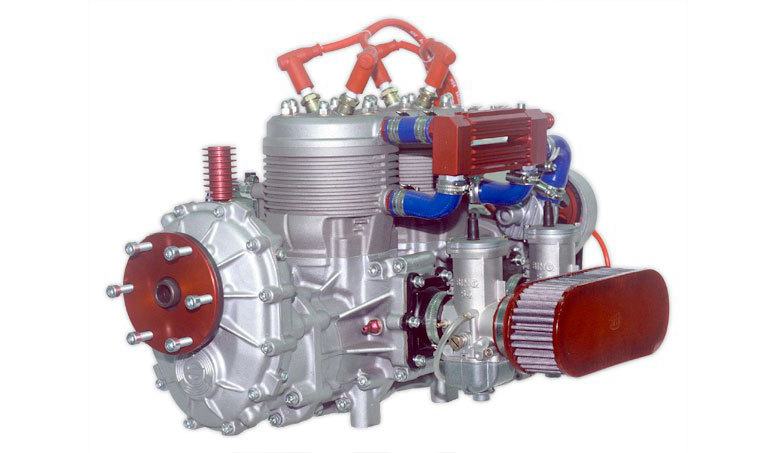

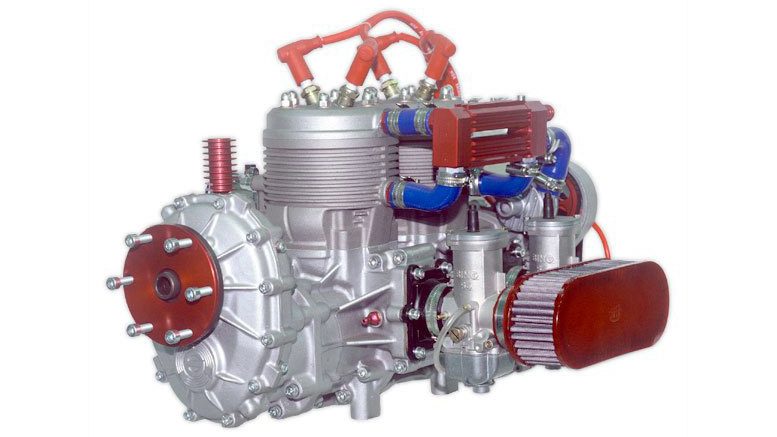
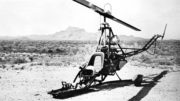
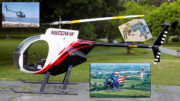
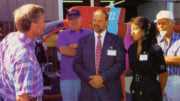
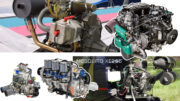
Be the first to comment on "Two Stroke Aircraft Engine Tuning Tips"